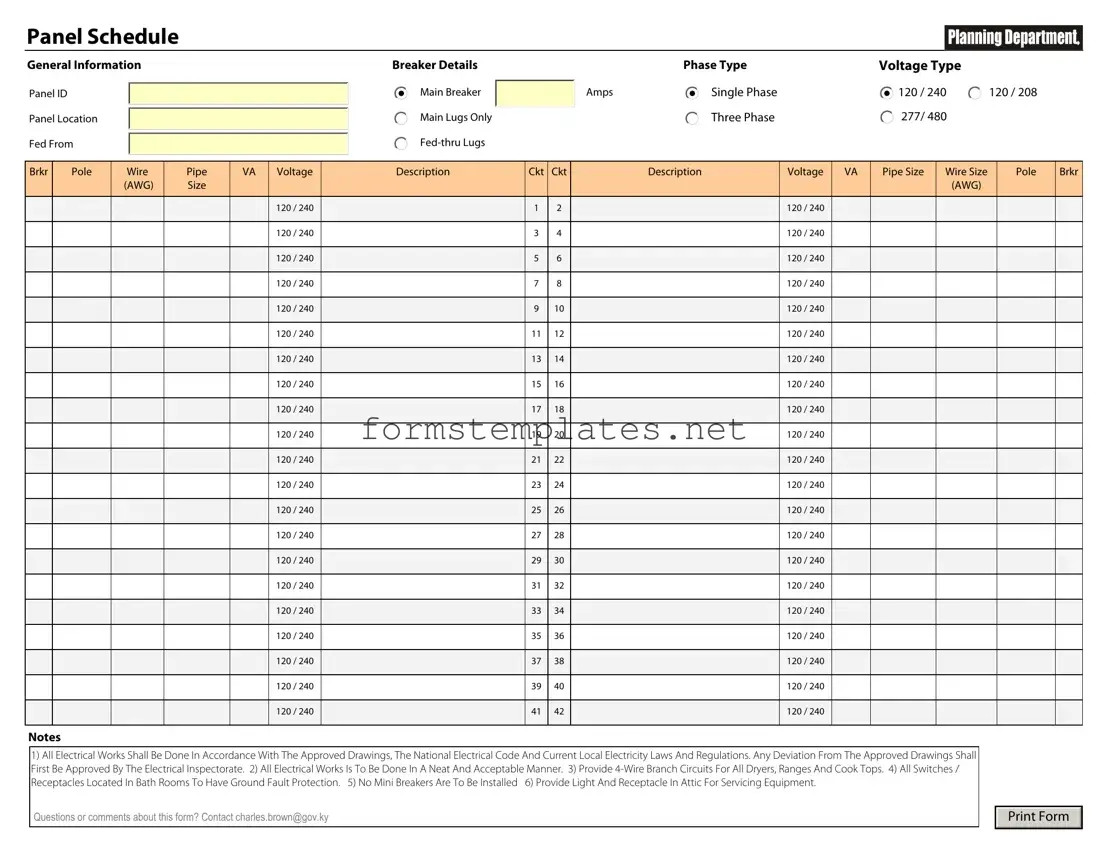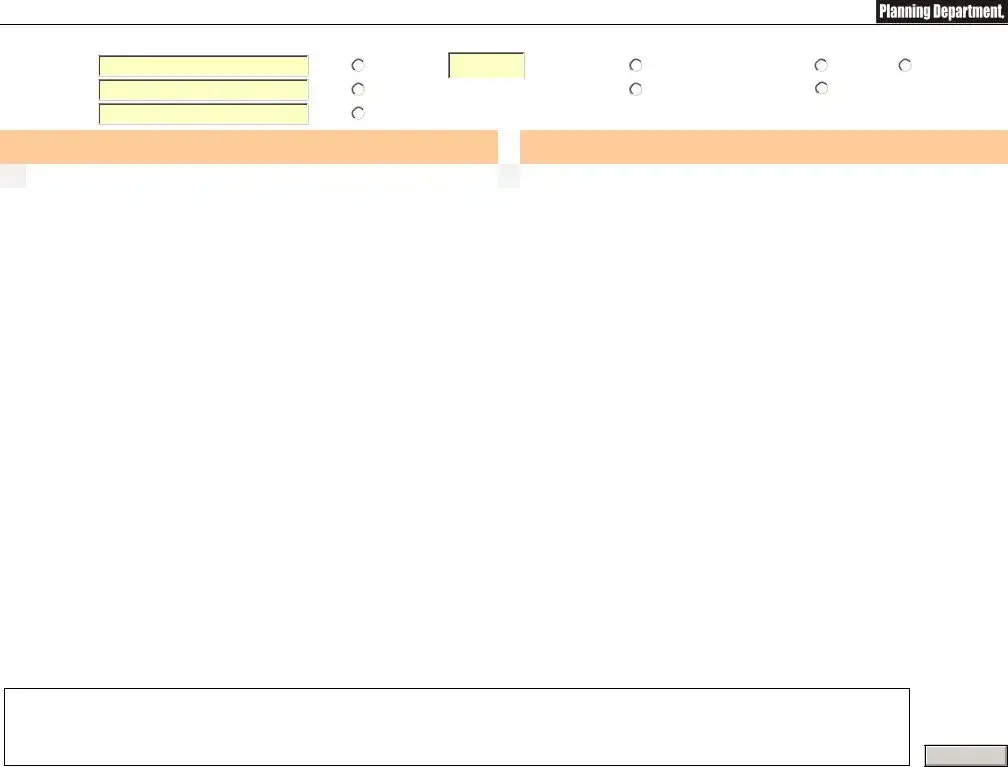The Electrical Panel Schedule form serves as a crucial tool for organizing and managing the electrical distribution within a building. This form provides a detailed layout of circuits, breakers, and their respective loads, ensuring that electrical systems operate efficiently and safely. Each entry in the schedule typically includes information such as circuit numbers, breaker ratings, and the specific areas or equipment each circuit powers. This comprehensive overview not only aids in identifying potential overloads but also simplifies maintenance and troubleshooting processes. Additionally, the form often incorporates details about the main panel and subpanels, enhancing clarity for electricians and contractors. By keeping the electrical system well-documented, the Electrical Panel Schedule form plays a vital role in compliance with safety regulations and standards, ultimately contributing to the overall safety and functionality of the electrical infrastructure.

